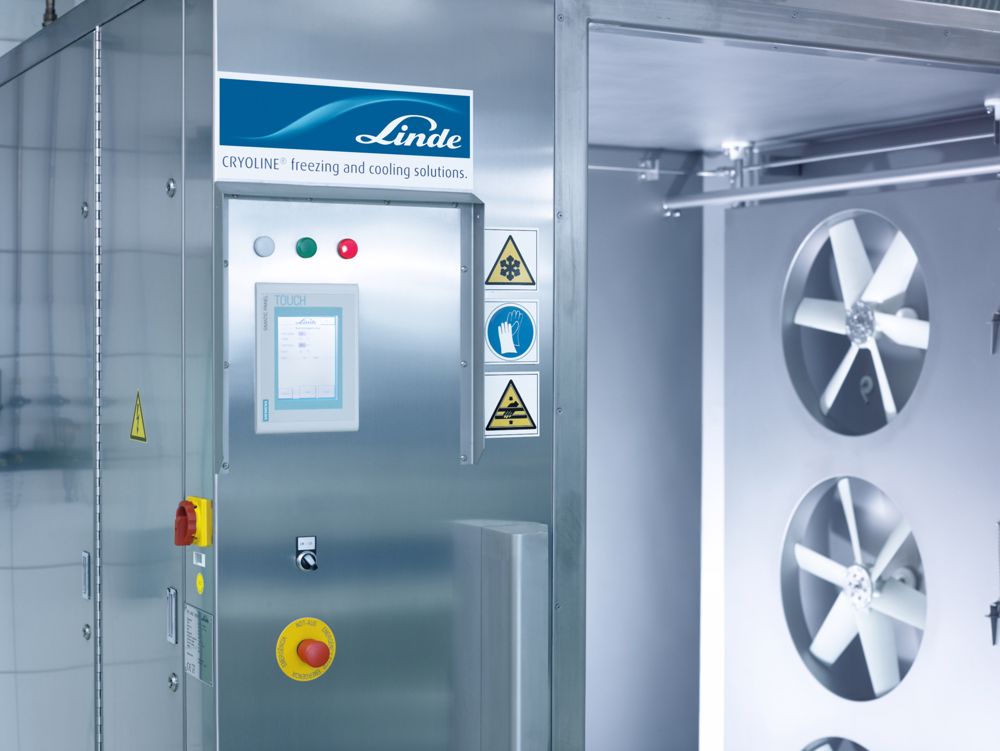Chemical Engineering and Preservation of Food by Freezing
When I was a lad in England in the latter days of the second world war and the late 1940s, we would enjoy fresh vegetables before the onset of winter. However as winter wore on fresh vegetables disappeared, leaving only tinned and dried foods as few people had fridges to preserve fresh food.
Now of course it is very different. From corner shop to large supermarket we can enjoy the whole range of vegetables, meats and seafood, with vitamins and goodness intact, all the year round by buying frozen foods and storing it in the freezers owned by almost every household.
How did this transformation come about?
Though commercial food freezing had been known since the 1920s, it did not become commonplace domestically until the 1950s and chemical engineering has played a large role in making this happen.
Liquid nitrogen
Various methods can be used for food freezing but for the best results, preserving produce in as near an 'as picked' or 'as caught' state as possible, liquid nitrogen (at -196 degC,77K) is used to freeze it in a freezing tunnel. This very rapid cooling produces only minute ice crystals in the food, resulting in minimal disruption of its structure. Slower rates of freezing would allow the ice crystals to grow, meaning the food would be 'mushy' and of poor texture on thawing.
The liquid nitrogen is produced by its separation from air using cryogenic distillation. This process is very energy intensive but, looking ahead, is potentially ecofriendly if the power used is 100% renewable. The process of air separation consists of drawing feed air through filters, washing, cooling to cryogenic temperatures thereby removing moisture and carbon dioxide, then as it becomes liquefied separating it into oxygen, nitrogen and argon by distillation.
The separated products are then drawn off and heated to atmospheric temperature by the incoming air.
Nitrogen is cooled to its liquefaction temperature to produce bulk liquid before going to cryogenic storage and distribution.

Cryogenic Transport
The transport of bulk liquid nitrogen where equipment interfaces with the public rightly demands a high level of practical chemical engineering skill in addition to the expertise of the automotive engineer. The liquid nitrogen is transported to customers in cryogenic tankers – road or rail. A cryogenic tanker is essentially a process plant on wheels which has to handle, store and transfer liquified gases at temperatures below -180 degC. Their design has to ensure the pressurised vessel and pipework maintain their strength and integrity at temperatures where the physical properties of many metals change and ensure through the insulation from double-skin tank walls separated by high vacuum that pressures do not rise to a level which would cause product loss, over-pressurisation and danger to the public and employees. Internal baffles are used to prevent vehicle instability as the heavy load of liquid moves, particularly on bends and roundabouts.

At the frozen food production plant, the produce is fed into a freezing tunnel, conveyed through the system on metal conveyor belts and sprayed with liquid nitrogen. Key aspects of the tunnel design are: materials which will withstand cryogenic temperatures; the correct speed to ensure satisfactory rate and extent of cooling with no damage of product; safe discharge of gases; access for thorough cleaning; precise monitoring and control systems. The product leaving the tunnel is packaged and transferred to a cold store awaiting dispatch.
Looking ahead
The market for frozen food will continue to expand. Liquid nitrogen production uses a plentiful feedstock (air) and in use is simply released back to the atmosphere. The challenge for chemical engineers, however, is to reduce the carbon and energy footprint of its production either by using renewably powered distillation and liquefaction processes or using alternative sustainable separation methods, such as those based on advanced membrane technologies.